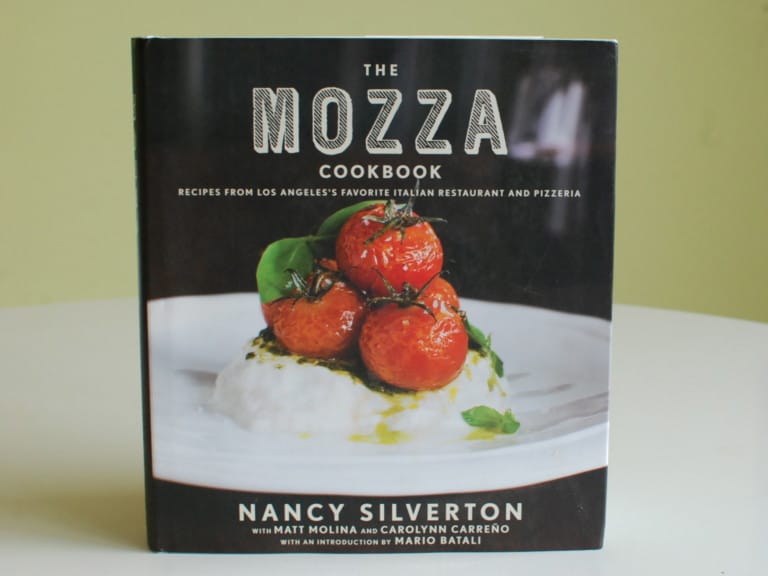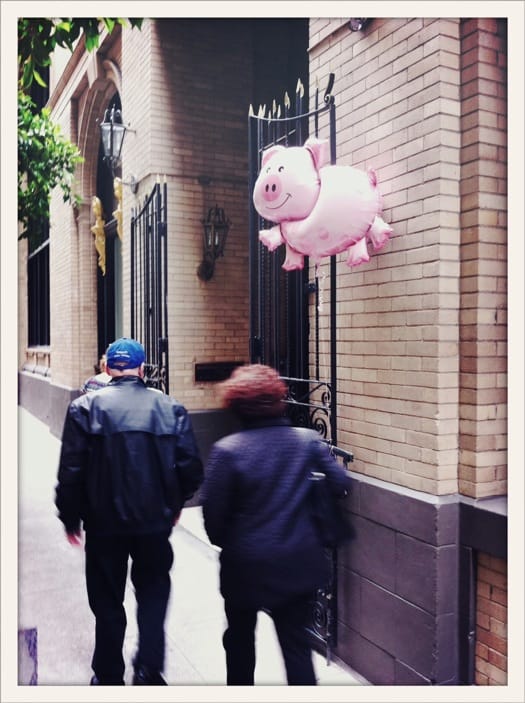Perhaps the most lasting image of the Great Depression was the soup kitchen line, where indigent city dwellers and citizens waited for a free meal. We all hope and pray that our government and the situations around us do not compel our country to be at that level ever again, but with the ailing economy, it’s tough to see the bottom. Food is a very emotional thing, often connected with prosperity and well being, but often food is instrumental in identifying us with our true needs during hard times. There are very few people who are truly recession-proof, including the wealthiest. Of course, the wealthiest still have the softest net to land on, but ordinary people, who jobs and well-beings are in jeopardy, may not have it as fortunate.
It’s in these times that we need to look beyond food for a moment and think about what’s truly important. Times may get more difficult, or they may improve, especially with the historical inauguration of our 44th president in the coming days. Whatever the case, take a moment and value what is important to you. Relationships, people, family, ideals, and posterity should take precedence over gastronomy or gluttony. We should appreciate every meal, but we should appreciate so much more than food every time that we eat.
So with this prelude, let me commence upon my suggestions for eating well, or even better during this recession.
1. Eat at home. The easiest thing to do to save money is to eat at home. Shop for groceries and get fruits, vegetables, and grains. These will feed you and your family for much cheaper than meats and frozen food. In addition, they’re healthier and better for the environment (as long as you eat locally, try to stay away from Chilean berries…even in the middle of winter). Of course, this idealism can’t always be followed all the time with our busy lives, so at least try to slow down a little and introduce home-cooking a few more times a week than you do now.
Read a cookbook or free recipes online, and think about what you can cook for (or with – participation is a huge bonus) your family. In this way, you’ll not only eat well while saving cash, but you will enjoy your food much more. You’ll appreciate how ingredients are sourced and you will understand a little bit more that it takes effort to make a good meal. These meals don’t have to be avant-garde or stacked up like restaurant food. Just open an inexpensive bottle of wine from Trader Joe’s, lay our your ingredients, prep your mise-en-place, cook at a slow pace with plenty of time, and set up the table before you eat. Enjoy over wonderful conversation, finish up the bottle of wine, and put the dishes in the dishwasher. You’ll forget recession for just a few hours, maybe longer if you do.
2. Go ethnic. Ethnic dining, especially here in Los Angeles, gives you some of the best bang for your buck. It’s a little more of a trek sometimes to go to South Bay for Japanese, San Gabriel for Chinese, Korean in Koreatown, or Little Saigon for Vietnamese. Go to East LA for good Mexican, go to Thaitown, Westwood or Glendale for Middle Eastern, or San Fernando Valley for good Thai. There are many other cuisines that I haven’t listed, but more often then not, you can get delicious food at a much lower price than at places that are always featured in travel magazines. The typical Westside restaurant easily commands a 10%-15% premium, perhaps more, just because of the higher overhead from rent. Try something hidden or unknown in a strip mall. Ethnic cuisine is the hallmark of Los Angeles cuisine, so go ahead and explore. Do it because you love food and want to experience this city for all it has. Revel a bit in the lower gas prices and make the trip. You’ll appreciate it.
3. Pack Lunch. The LA Times recently had an article about 40 different things to pack for lunch that would beat your own plain-jane bologna sandwich. Buy some Tupperware and pack them with your leftovers from the home-made meals from suggestion #1. Use your company galley’s microwave, but do not pack frozen food. If you want a sure-fire way to be miserable during this recession, try saving money by taking frozen food to the office. Not only do I detest this, I think it’s detrimental to our health to be eating so much processed food, and it mostly just flat-out tastes bad. I see dozens of people doing this at my company every day. This is a horrible way to live. Pack lunch, you will appreciate the savings to your wallet, and you will invariably be happier eating delicious, fresh food over the frozen stuff in those flimsy cardboard boxes.
4. Eat Breakfast and snack on veggies/fruit throughout the day. Your metabolism gets a head-start if you eat within half an hour of waking up. When you do this, you aren’t as hungry during lunch and don’t have to eat monster meals. Munch on fresh veggies and fruit after lunch and you won’t be as hungry for dinner. Eating breakfast doesn’t cost you very much (last time I checked, bananas were dirt-cheap and yogurt packs were selling for 40 cents each at the supermarket).
5. Brew your own coffee. If you need your Starbucks, or even McDonald’s, ditch them both, buy a Melitta filter at the supermarket for $4, buy some cone filters (also uber cheap), and brew coffee using the hot water maker at home or at the office for just a few cents a cup. Buy nice beans from Coffee Klatch for around $10 a pound, and grind it at the beginning of the week (every morning is preferred as ground coffee starts to stale within thirty minutes) and take it to work. You’ll save so much money by skipping out on Starbucks. Then, spend some of your savings for the good stuff at Intelligentsia on the weekend, when you can make the trip out there.
6. Corkage. Go to places with low corkage. This is a no brainer. Places that I know that take them here in LA? Sadly The Park in Echo Park no longer does BYOB, but Café Bizou has low corkage, Houston’s has no corkage (but the food is expensive), Casa Bianca as $5 corkage, Canele has $10 corkage, and many other spots are affordable as well. If you want to go to a wine bar but don’t want to spend $10 a glass? Go to Silverlake Wine and open a bottle there for free (as long as you buy it there). You can get your $40 bottle of Bordeaux that would cost $120 at a restaurant, or $35 a glass and sip it at a mere $10 (on average) a glass.
7. Stop eating expensive food. If it’s a habit, or a hobby, then just reduce by 50% a week (or month). You’ll save money, and you’ll start to realize that the rest of the world’s food doesn’t taste (or look) as fancy. This is not a bad thing. Rather, you’ll appreciate the simpler things of life, and there’s nothing wrong with that. If you must get high-end, which I completely understand as I have these compulsions from time to time, then go to lunch. Many places, such as Patina and R23 offer the same dishes at lower prices. Or use sites like Restaurant.com and their occasional promotions to obtain cheap coupons. I have a $100 to Tracht’s that I’m planning to use for a celebration (albeit with a minimum $200 over meal expenditure required) in the near-future. That coupon cost me $8. For $100 savings. Can’t beat that.
8. Eat smaller portions. I said it. Americans eat too much. In Japan, I was surprised because all of the restaurant portions were so much smaller than what I was used to, but my friends there told me that those are normal portions. I’m just used to massive, Cheesecake Factory-type sizes that I can’t seem to understand that my body doesn’t need as much as restaurants put on the plate. Eat until you start feeling the first twinge of satiation, or just before. Order smaller portions or just leave a little on the plate. There’s nothing wrong with restraint. Eat less, but eat it more frequently, and you’ll be on your way of feeling better and saving money.
9. Support the little guys. If you’re going to eat out, go to your local neighborhood spot. While places like Cheesecake Factory and Outback Steakhouse employ hundreds of well-deserving people, your locally owned restaurant is something you’d probably want to see go out of business later than the corporate places. If you must go to a chain, just make sure you haven’t evaluated a local (and often more reasonably priced) restaurant first. If your friends insist on the monthly Buca di Beppo run, steer them toward C&O Trattoria. If they want to go to BJ’s, go to Masa of Echo Park for Chicago-Style eats. Go to Damon’s Steakhouse instead of Outback. In fact, go anywhere except Outback – I’ll guarantee you’ll be happier.
10. Invite friends and family and share. Nothing makes life more precious and valuable than shared meals. You’ll save when you buy food in bulk and a general culture amongst family and friends will encourage multiple dinner parties (ones you won’t prepare, but just attend, and participate in), eventually saving you money in the long run. Plus, you won’t feel like there’s a recession when you have so many loved ones around you. A recession, like most uncomfortable, or negative things in life, are really more about how you look at them, and how you approach them. There are things that are outside of our control, but if we as foodies and gastronomes can still make the most of what we have, then we can weather tough times together.









Blog Comments
cafe bizou
March 5, 2010 at 12:36 AM
[…] … Leave a comment. Name (required) E-mail (will not be published) (required) Website. Submit …Food GPS How to Eat Well, or Better, in a RecessionSadly The Park in Echo Park no longer does BYOB, but Caf© Bizou has low corkage, Houston’s has […]
CrisBetewsky
July 6, 2009 at 12:43 PM
Your site is worth beeing in the top cause it contains really amazing information.
KattyBlackyard
June 14, 2009 at 5:52 PM
The best information i have found exactly here. Keep going Thank you
How we roll… CHEAP and CHEERFUL (yay!) « folie à choisauce- let the madness begin…
February 12, 2009 at 12:42 PM
[…] “in times like these…” wah wah wah…yes, most everyone is po’ these days and just trying to stretch that dollar. (matthew’s absolutely wonderful article on useful recession tips can be found on food gps here) […]
mattatouille
January 15, 2009 at 9:21 AM
H.C., that is a great recommendation. Budgeting is crucial, and something I need to get better at.
H.C.
January 14, 2009 at 7:38 PM
All great tips — the only extra one I would throw in is to actually budget & plan; lots of people mindlessly spend money on food, a take-out meal here, a lunch with co-workers there, vending machine trips — it all adds up (esp. if using the plastic and not noticing cash emptying out of the wallet.)
Say, by taking a month’s worth of food bills or even simply jotting it down on a notebook and figuring out how much is actually spent and what can be trimmed (maybe I don’t that latte trip three times a week) and planning around splurge meal periods (*cough*DineLA weeks*cough*), one’d be surprised how much can be saved from the food bill. In my case, that only means I can save up for and enjoy my next splurge meal so much the sooner 🙂